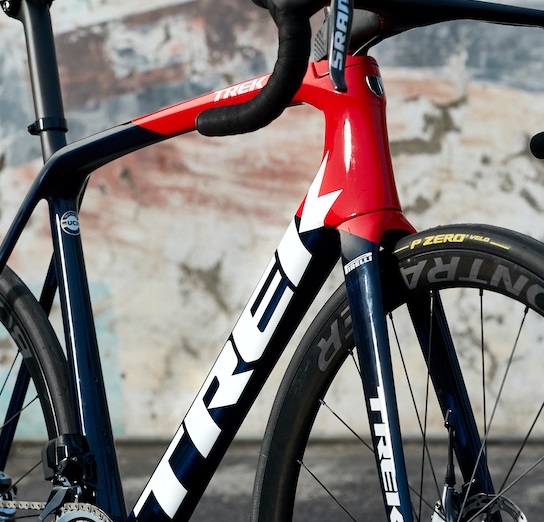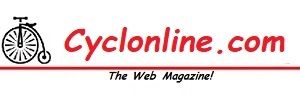
Trek EMONDA SLR: Critical Analysis, Reported Problems, and Defects from Owners
Trek EMONDA SLR: Critical Analysis, Reported Problems, and Defects from Owners
The Trek Emonda SLR series is positioned in the lightweight/all-rounder segment of the market, characterized by the use of OCLV 800 Series carbon (in the most recent versions) or OCLV 700 Series (previous versions) aimed at reducing frame weight. Despite its reputation for excellent construction and high performance, analysis of reports from the user base reveals the existence of recurring issues related to structural reliability, component integration, and long-term ride comfort.
1. Structural Reliability Issues and Official Recalls
The most significant defect to emerge in the model’s recent history concerns the reliability of the handlebar/stem system and has led to an official recall.
1.1 Official Recall (2021-2022 Models)
A Safety Recall Notice was issued for 2021 and 2022 model year Emonda SLR bicycles (including Project One versions). The issue was specifically related to the drops of the handlebar and/or the integrated Bontrager Aeolus RSL VR-C carbon handlebar/stem.
Nature of the Defect: The carbon component was found to be potentially susceptible to fracture when subjected to excessive loads.
Reported Risk: Loss of bicycle control leading to a crash and injury for the rider.
Resolution: Trek required owners to immediately stop using the bicycle and take it to an authorized dealer for a free replacement of the affected component.
1.2 Frame Crack Reports
Prior to the component recall, and also generally regarding the frame, reports of cracks on the frames have been documented (particularly the Emonda model, though not always specified as SLR, but often referencing OCLV frames).
Nature of the Problem: Cracks manifesting in seemingly unusual areas or at stress points, sometimes initially mistaken for a defect in the clear coat finish only.
Manufacturer’s Response: In several documented cases, Trek promptly authorized warranty frame replacement, implicitly acknowledging a structural or manufacturing flaw in those specific units.
2. Critical Issues Related to Integration and Components
The design integration and the choice of some proprietary components, while aiming for aesthetics and aerodynamics, have generated maintenance and functionality problems.
2.1 Bottom Bracket Creaking Issues
One of the most widespread technical complaints among Emonda SLR owners, particularly on recent (2022) models, concerns the onset of noises and creaking localized in the bottom bracket area.
Relevant Design: The Emonda SLR uses a T47 threaded bottom bracket. Although T47 was introduced to eliminate the typical problems of Press-Fit systems, reports indicate that creaking persists in some units.
Attempted Solutions: Maintenance interventions (greasing the thru-axles, headset, or the bottom bracket itself) often provided only temporary relief, with the noise returning after a few hundred kilometers or on steep gradients.
Additional Note: Some users resolved the problem by replacing the bearings with aftermarket alternatives (e.g., Praxis or Hawk Racing), suggesting a possible tolerance or durability issue with the stock bearings (such as, for example, Ceramic Speed, which are known to require very frequent maintenance).
2.2 Front Brake/Frame Interference
In the earliest versions with rim brakes, a mechanical interference defect was reported:
Nature of the Problem: When turning the handlebar (even slightly) left or right, the Bontrager front brake (often supplied by TPR) would touch the frame, causing abrasions and paint damage. This issue was labeled by some as a "manufacturing defect" due to insufficient clearance between the brake component and the carbon frame.
2.3 Seatpost System
The integrated seat mast system (seat mast cap) is a stylistic and lightweight element but has been criticized for its maintenance and functionality.
Criticism: The clamping mechanism can be susceptible to slow slippage if not properly secured with carbon grip paste. Furthermore, the design has been labeled by some users as "annoying and useless" due to its complexity compared to a traditional seatpost.
3. Subjective Feedback on Geometry and Comfort
Despite the bike's excellence in terms of responsiveness and low weight, the long-term riding experience has raised questions for some users.
3.1 Aggressive Geometry and Reduced Comfort
The Emonda SLR was designed with competition as its primary goal. Its design is inherently oriented towards rigidity and responsiveness, resulting in:
High Rigidity: The bike is described as "nervous" and "watt-hungry," excelling in accelerations and climbs.
Subjective Discomfort: Some owners have reported that the bike feels uncomfortable on long rides, accentuating road vibrations and every minor bump. This sensation of discomfort has sometimes been compared negatively to competitor models that, while rigid, offer better vibration dampening.
3.2 Aerodynamic Versatility vs. Lightweight Purism
With the introduction of the aerodynamic version, the Emonda SLR partially moved away from its vocation as a pure climbing machine in favor of greater speed on the flats. While this expanded the model's use:
Minimum Weight: The current version, despite being extremely lightweight (frame under 700 grams), has a greater overall weight than previous rim brake versions, especially due to the introduction of disc brakes and integrated aerodynamics. This has generated discussion among users most focused on "gram counting" and absolute minimum weight.
4. Summary Conclusions
A critical analysis of the Trek Emonda SLR shows that the model is a high-performance platform that fully satisfies the requirements for lightness and responsiveness. However, the aggressive component integration and design choices aimed at extreme performance have introduced several non-trivial reliability and maintenance issues, particularly bottom bracket creaking and, in specific model years, the risk of failure of the handlebar/stem components, which necessitated an official safety recall. The resolution of these problems has at times proven complex for the end-user.
